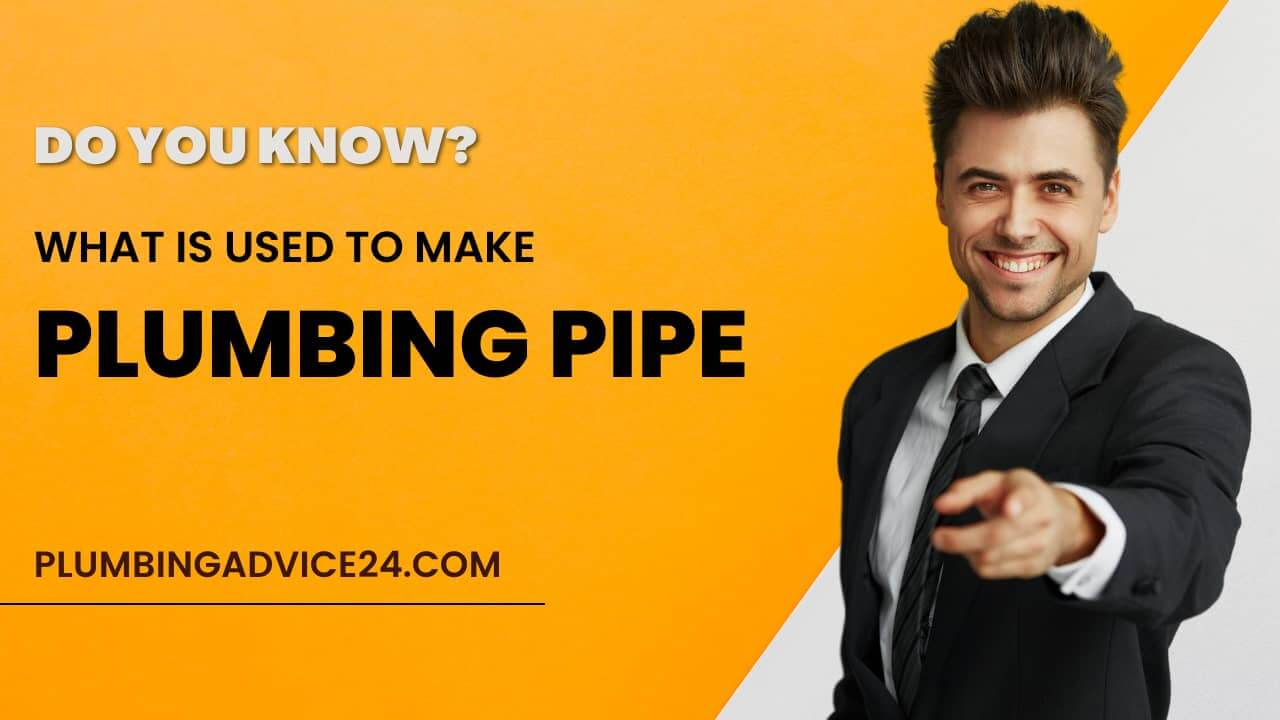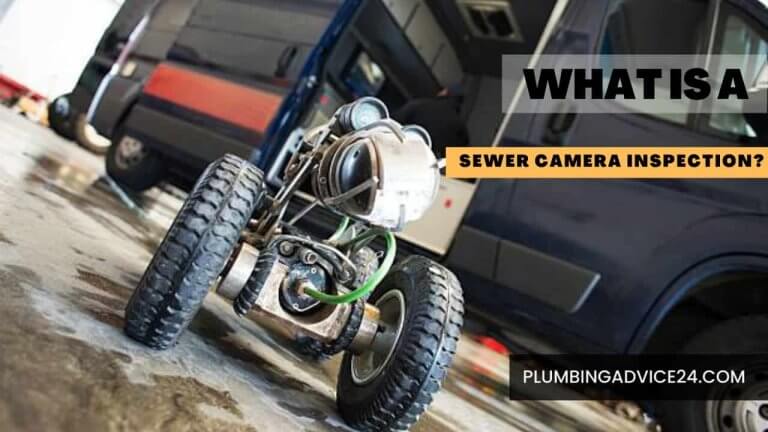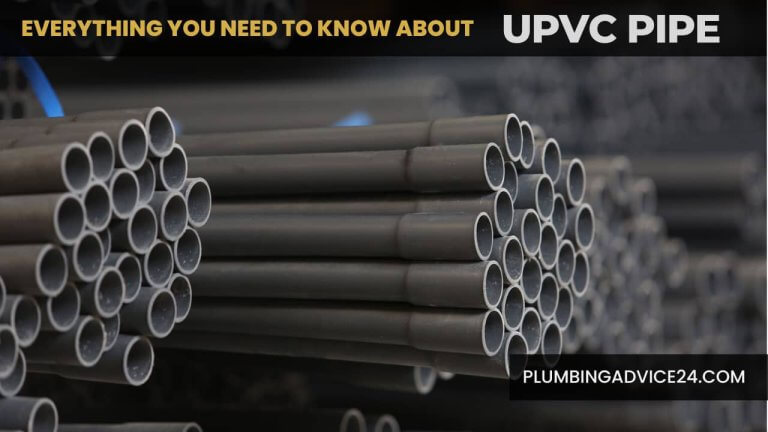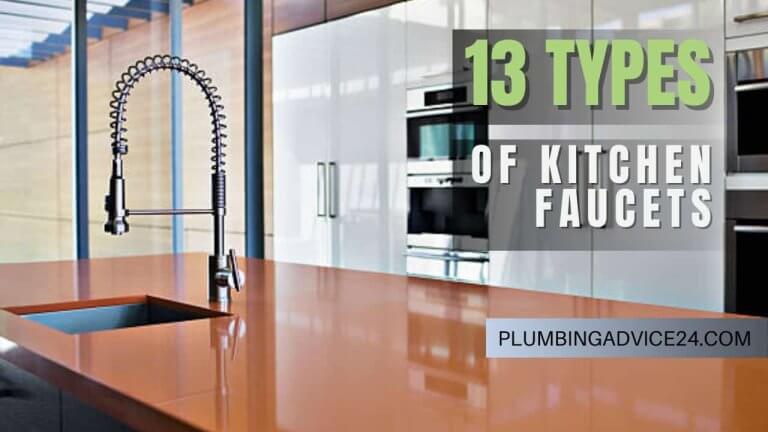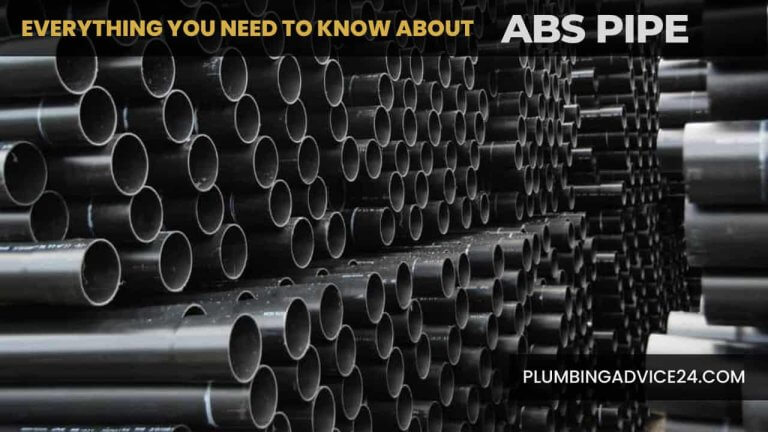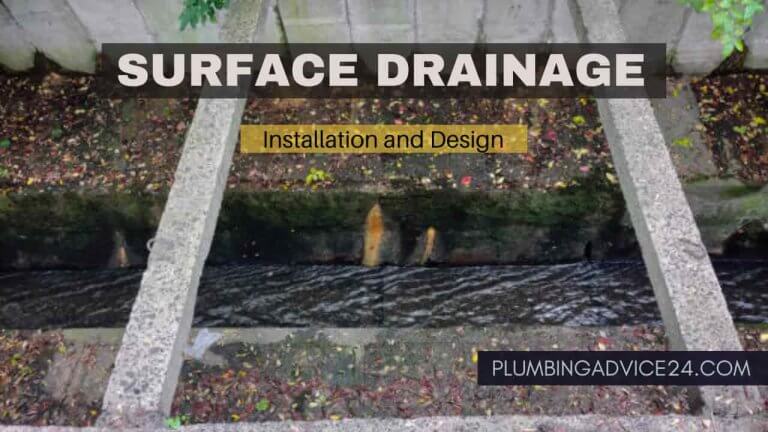What Is Used to Make Plumbing Pipes
Friends, we have learned about the types of plumbing pipes and joints, so let us now know about the different materials used in pipes by which different plumbing pipes are made. Material used in plumbing pipes that we want a lot of space around us, but we do not know much about it, so let us know what that material is, which Materials are used to make plumbing pipes, Where it is used except in plumbing pipes, Where are the properties of the material and how many hazards are associated with it, etc., so let’s, friends.
What Is Plumbing Pipe Materials?
The material used to make plumbing pipes is called pipe material. We all use plumbing pipes for drinking water or sewer line in homes or offices. But you should know that the pipe used for your drinking water is safe for you. And how to know this? You need to know about the material used to make the plumbing pipes you are using.
Even if you are going to install a new plumbing system, you will find studying this material helpful for Choosing pipes. There are different types of pipe materials which are as follows.
What Is Used to Make Plumbing Pipes?
As we know, there are different types of plumbing pipes. But what material those pipes are made of, we don’t know. In this chapter, we will study this material which is used to make plumbing pipes. You should read the article further to know where else this material is used and what are its pros and cons.
Following are the materials used to make plumbing pipes.
- Steel
- Stainless Steel
- Carbon Steel
- Mild Steel
- Pvc (Polyvinyl Chloride)
- Copper
- Plastic
- Thermoplastic
- Iron
- Ductile Iron
- Cast Iron
- Brass
- Concrete
- Reinforced Concrete
- Polymer Concrete
- Lead
- Cross-Linked Polyethylene (Pex)
- Chlorinated Polyvinyl Chloride (Cpvc)
- Aluminum
- Soil
Let us now study this material in the area,
1. Steel
Steel is an alloy made of iron. It is made with a tenth of a percent of carbon which increases its strength and ability to improve fracture resistance compared to other forms of iron. Steel is the most important engineering and building material in the world. It is also widely used around us.
Uses of Steel
- Reinforcing bars in reinforced concrete
- Railroad tracks
- Modern buildings
- Bridges
- Wires
- Infrastructure
- Tools
- Ships, trains, cars, rockets
- Electrical appliances
- Weapons
Advantages of Steel
Here, the pros of Steel are as follows.
- Reliability
- Industrial behavior
- The nature of high strength and lightweight
- Durability
- Resilience
- Strong
- Recyclable
Disadvantages of Steel
Here, the cons of Steel are as follows.
- Higher maintenance costs and more corrosion
- Fireproofing costs
- Sensitivity to buckling
- High starting price / low availability
2. Stainless Steel
Stainless steel belongs to the group of ferrous alloys containing at least 11% chromium. In addition to chromium, stainless steel is made by mixing elements like nickel, carbon, manganese, molybdenum, nitrogen, sulfur, copper, and silicon to prevent iron from catching.
Uses of Stainless Steel
- Cookware
- Cutlery
- Surgical instruments
- Vehicles
- Building materials in large buildings
- In paper mills
- Chemical plants
- Water treatment
- Chemical industry
- Pharmaceutical
- Food processing plants
Advantages of Stainless Steel
Here, the pros of Stainless steel are as follows.
- Corrosion resistance
- High-temperature resistance
- Low-temperature resistance
- Weldability
- Formability
- Controls magnetism
- Durability
- Easy to recycle
Disadvantages of Stainless Steel
Here, the cons of Stainless steel are as follows.
- More expensive than other types of stuff
- Frequent cleaning is required
- Sometimes non-magnetic
- Heavier than other types of metals
- High scrap costs can also be generated
3. Carbon Steel
Carbon steel is the one type of steel that has a carbon content of about 0.05 to 2.1% by weight. It is made by adding 1.65 percent manganese, 0.60 percent silicon, 0.60 percent copper or less, and elements like chromium, cobalt, molybdenum, nickel, niobium, titanium, tungsten, vanadium, and zirconium.
Uses of Carbon Steel
- Pipes
- Crankshaft
- Coupling
- Structural steel
- Sheet steel
- Automobile panels
- Low-temperature pressure vessels
- Parts of machinery
- Gears
- Excels
- Bolts
- High strength wire
- Cutting tools
Advantages of Carbon Steel
Here, the pros of Carbon steel are as follows.
- Increased power
- Less expensive than stainless steel
- Durable
- Shock resistant
- Safer to handle and work than other metals
- Environmentally friendly
- Easy to recycle
Disadvantages of Carbon Steel
Here, the cons of Carbon steel are as follows.
- Hard to work with
- Can’t bend easily
- It cannot be molded into different shapes
- Corrosion is more likely
4. Mild Steel
Mild steel is carbon steel but has a very low carbon content (approximately 0.05-0.30%). As it is the most common form of steel, it can also be identified as plain-carbon steel or low-carbon steel. They are malleable and ductile due to their low carbon content. Mild steel has lower tensile strength and is relatively less expensive than other steel.
Uses of Mild Steel
- Construction of the building
- Pipelines
- Automobile manufacturing
- Wiring
- Food cans
- Fencing
Advantages of Mild Steel
Here, the pros of Mild steel are as follows.
- Malleable and ductile
- They are easy to work with as they cool easily
- Machinability
- Weldability
- Magnetic
- Can be molded into specific shapes
Disadvantages of Mild Steel
Here, the cons of Mild steel are as follows.
- Relatively less strong
- Limits of heat treatment
Must Read : Types of Steel Pipes | Stainless Steel Pipe Vs Carbon Steel Pipe
5. PVC (Polyvinyl Chloride)
From the group of plastics, synthetic resins are made by the polymerization of chloride, which we know as polyvinyl chloride (PVC) or vinyl. Thus it is in a rigid form. But it can be softened by adding plasticizers. Rigid PVC is commonly used for applications such as construction and plumbing.
Uses of Pvc (Polyvinyl Chloride)
PVC is used for,
- Pipes and fittings (drainage pipes, water service pipes)
- Doors and windows
- Construction
- Blood storage bag
- Cable and wire insulation
- Flooring
- Roofing membrane
- Automotive interiors and seat coverings
- Packaging
- Credit cards
Advantages of Pvc (Polyvinyl Chloride)
Here, the pros of PVC are as follows.
- Durable and lightweight
- Fire resistant
- Stress strength and impact resistance
- Chemical resistance
- Easily available and inexpensive polymer
Disadvantages of Pvc (Polyvinyl Chloride)
Here, the cons of PVC are as follows.
- Relatively less strong
- Limits of heat treatment
- Easily cracked
- Environmental and health hazards
6. Copper
Copper is one of the few metals that does not have a natural gray or silver color. Such pure copper is similar to orange-red in color but acquires a reddish stain when exposed to air. Like other metals, galvanic corrosion is more likely to occur if copper is exposed to other metals.
It is widely used in electrical industries as it is soft and a good conductor of electricity. Many important alloys are made from copper. Like brass and bronze are alloys made by mixing copper.
Exposure to water and air causes an oxidation process, which causes it to turn green. It is a metal used to make coins like gold and silver. But since it is the most common of the three, it is often used to make less valuable coins. Copper is also found in gun metals.
Uses of Copper
- In electrical devices such as wiring and motors
- In construction (roofing and plumbing)
- Industrial machinery
- Making important alloys
- Gun metals
- Cannons
- Decorations
- Coins
Advantages of Copper
Here, the pros of Copper are as follows.
- Lightweight
- Formable
- Recyclable
- Electrical conductor
- Heat resistance
- Corrosion resistance
- Malleability
- Ductility
Disadvantages of Copper
Here, the cons of Copper are as follows.
- Shock Hazard
- More expensive
- Gets a reddish stain on exposure to air
7. Plastic
Plastic is a large range of synthetic or semi-synthetic materials that are commonly used in many places around us. Polymer is used as the main ingredient in it. Their plasticity makes it possible to mold, extrude or press the plastic into solid objects of various shapes.
Units of synthetic polymer repeat and form long chains of atoms, and they are often much longer than those found in nature. Polymer makes lightweight, strong, and flexible plastics by arranging these hundreds in length and pattern. And because it is cheaper than all the other materials, it is widely used.
Most modern plastics are made from chemicals such as natural gas or fossil fuels such as petroleum. Because plastic is so difficult to store and recycle, it can have a devastating effect on the environment, which is detrimental to health.
Due to this, its use in many industries is declining. Its partial use is also found in polymer implants and other medical devices. Around the world, the abundant production of plastics has become a matter of concern.
Uses of Plastic
- Automobiles
- Furniture
- Toys
- Packaging
- Building and Construction
- Cloth hanger
- Consumer products
- Transportation
- Electrical and Electronics
- Industrial machinery
Advantages of Plastic
Here, the pros of Plastic are as follows.
- Product cost is low
- Lightweight
- Corrosion-resistant
- Poor conductor of heat and electricity
- Sustainable and long life
- Resistance to chemicals and water
Disadvantages of Plastic
Here, the cons of Plastic are as follows.
- The world’s water pollution is mainly from plastic
- Not biodegradable
- When plastic is burned, it produces toxic fumes
- Plastics become brittle at low temperatures
- The cause of cancer
- Harmful to animal and human health
- Recycling is an expensive process
8. Thermoplastic
Thermoplastic is a plastic polymer material that becomes soft or moldable when heated and hardened when cooled. It is also called thermosoft plastic.
When it is heated, it becomes weak, and when it produces a viscous liquid, it is cooled to its proper shape. This process does not change any of its chemical properties, which makes it very easy to recycle.
Thermoplastics play a particularly important role in many products. Such as acrylic, acrylonitrile butadiene styrene (ABS), nylon, polylactic acid (PLA), polybenzimidazole, polycarbonate (PC), polyether sulfone (PES), polyoxymethylene (POM), polyethylene (PE) ), Polyphenylene oxide (PPO), polyphenylene sulfide, polypropylene (PP), polystyrene, polyvinyl chloride (PVC), polyvinylidene fluoride (PVDF), polytetrafluoroethylene (Teflon), etc.
Uses of Thermoplastic
- Gas and water pipes
- Machine parts
- Bearings
- Gears
- Artificial joints
- Bulletproof vest
- Chemical tanks
- Toys
- Shampoo bottle
- Plastic bag
- Packaging
- Food container
- Sanitary products
- Heat-resistant medical equipment
- Ropes
- Carpet
- Car battery
- Cable insulation
- Storage bins
Advantages of Thermoplastic
Here, the pros of Thermoplastic are as follows.
- Easily recycled
- Mechanical properties
- Light weight compared to metals
- Good chemical resistance
- Energy-efficient process
Disadvantages of Thermoplastic
Here, the cons of Thermoplastic are as follows.
- Thermoplastics degrade more easily in direct sunlight
- Not all thermoplastics are resistant to hydrocarbons, organic solvents, and polar solvents.
- Some types experience crawling under long-term loading
- Fractures can occur instead of deforming under high stress
Must Read : Difference Between ABS and PVC | How to Connect ABS to PVC Pipe | Which is Better ABS or PVC Pipe
9. Iron
Iron is the fourth most common metal found in the earth’s crust. It is a brittle, hard substance that is mostly used to make steel. It is also believed that the main part of the earth is made of iron and that it may be abundant in the sun and stars.
Uses of Iron
- Pipes
- Valve
- Pump
- Bridge
- Vehicles
- Cutting tools
- Rifle barrel
- Electric motors
- Generator
- Transformers
- Weapons
- In the production of steel
Advantages of Iron
Here, the pros of Iron are as follows.
- Found in abundance
- Durability
- Relatively inexpensive
- It can be converted into various forms
- High tensile strength
- Good conductor of electricity
- Magnetic properties
Disadvantages of Iron
Here, the cons of Iron are as follows.
- Corrosion can occur in contact with water or air
- It is brittle
- More expensive than other materials like concrete
- Being overweight makes it difficult to move from one place to another
10. Ductile Iron
Ductile iron is a type of cast iron filled with spherical graphite; hence it is also called spherical graphite iron or spherical graphite cast iron. Apart from that, ductile cast iron is also known as nodular cast iron and SG iron.
Ductile iron has greater impact and fatigue resistance due to its unique microstructure, while most varieties of cast iron are weak in stress and brittleness.
Uses of Ductile Iron
- Pipes and plumbing
- Axels
- Crankshaft
- Cylinders
- Gears and gearboxes
- Off-highway diesel truck
- Agricultural tractor
- In the oil well pump
- As a hub and machine frame in the wind energy industry
Advantages of Ductile Iron
Here, the pros of Ductile iron are as follows.
- Can be easily cast and machined
- Cost much lower than steel
- Excellent wear resistance
- Prevents the formation of cracks
- More impact and fatigue resistance
Disadvantages of Ductile Iron
Here, the cons of Ductile iron are as follows.
- Higher production costs than gray iron
- Low-pressure resistance
- Prone to external and internal corrosion
- Internal and external security systems are required
- Polyethylene wrappings can be damaged
Must Read : What Is Galvanized Pipe | What Is Galvanized Pipe Used For | How to Measure Galvanized Pipe
11. Cast Iron
Cast iron is a material made from carbon-iron alloys that mix 2% to 4% carbon into iron. It can easily corrode, chip, or crack. Its main advantage is that it has a very high heat capacity. There are three main types of cast iron.
1. White cast iron
2. Gray cast iron and
3. Ductile cast iron
Ductile cast iron is stronger than both white and gray cast irons, while gray cast irons are stronger than white cast irons, but generally, gray and white cast irons are brittle.
Uses of Cast Iron
- Pipe
- large buildings or bridges
- Making kitchen utensils
- Gears
- Dies
- Automotive parts
- Anchors for ships
Advantages of Cast Iron
Here, the pros of Cast iron are as follows.
- Low cost
- Very brittle
- High compressive strength
- High wear resistance
- Good casting characteristics
- Melting point is lower than steel
Disadvantages of Cast Iron
Here, the cons of Cast iron are as follows.
- Corrosion is likely
- Poor tensile strength
- Parts section is sensitive
- Poor impact resistance
- It has a weaker mechanical capacity than steel
- High brittleness
- It is non-machineable (white cast iron)
12. Brass
Brass is an alloy made up of large amounts of tentacles and small amounts of zinc. In which small amounts of zinc can also be found. Brass is more degraded than bronze and zinc. It has long been used for decoration because of its luscious gold-like appearance.
Brass is also used in making utensils due to its electrical and thermally conductive properties. It is used in many machines due to its low melting point, high efficiency, and durability properties.
Uses of Brass
- Plumbing (pipe, hose coupling, valve)
- Locks
- Hinges
- Gears
- Bearings
- Zippers
- Electrical plugs and sockets
- Ammunition casing
- Musical instruments
- Costume
- Fashion Jewelry
Advantages of Brass
Here, the pros of Brass are as follows.
- Wide versatility
- Exceptional adaptability
- Durable
- Corrosion resistance
- High-temperature tolerance
- Very Malleable
- Aesthetics
- Anti-bacterial property
Disadvantages of Brass
Here, the cons of Brass are as follows.
- Zinc exposure will change from dark reddish-brown to light silvery-yellow
- Not as strong as steel
- Likely to blacken
13. Concrete
Concrete is a cement paste made by mixing water with cement and sand or gravel, which hardens over time. It is used so much in the world that it has become the second most used substance in the world.
It is commonly used in building materials as it is very strong, fire-resistant, and can be turned into any shape.
Uses of Concrete
- Big bridge
- Large pipeline
- Bricks
- Tiles
- Plumbing
- Roof
Advantages of Concrete
Here, the pros of Concrete are as follows.
- Easily Available
- Easy to Shape
- Extremely Versatile
- Energy efficient
- Durable
- Recyclable
Disadvantages of Concrete
Here, the cons of Concrete are as follows.
- Low hardness
- The weight of the comparison is greater than its strength
- Concrete may contain soluble salts that cause efflorescence
- Concrete is a semi-brittle material
- Low tensile strength
- Formwork required
- Long healing time
- Working with cracks
- Demands strict quality control
14. Reinforced Concrete (Rc)
Reinforced concrete (Rc) is also known by two other names: Reinforced Cement Concrete (RCC) or Ferro concrete. It has a low tensile strength of concrete and high tensile strength to compensate for softness. So it has the property of being strong as well as soft.
It is usually dormant and embedded in the concrete before it is set. In terms of corrosion engineering, when well-designed, the alkalinity of concrete protects steel ribs from corrosion. Reinforced concrete pipes or RCP pipes are made from Reinforced concrete.
Uses of Reinforced Concrete (Rc)
- Plumbing pipe
- Construction Slabs
- Walls
- Beams
- Commons
- Foundations
- Frames
Advantages of Reinforced Concrete (Rc)
Here, the pros of Reinforced concrete (Rc) are as follows.
- High compressive strength
- Strong and durable
- Fire and weather resistance
- Moldable
Disadvantages of Reinforced Concrete
Here, the cons of Reinforced concrete are as follows.
- The tensile strength is one-tenth of its compressive strength
- Mixing, casting, and curing affect the final strength
- The cost of the form used for casting is relatively high
- The compression causes the cracks to grow and lose strength
- Once the reinforced concrete is poured, we have to wait until it gains strength.
- Reinforced concrete can easily corrode due to the presence of steel
- Construction takes longer due to reinforcement
15. Polymer Concrete
Polymer concrete is a composite concrete containing a synthetic polymer inside a concrete binding material in which the polymer is used as a binder to replace lime-type cement.
Polymers are also used to make Portland Cement, Polymer Cement Concrete (PCC), and Polymer Modified Concrete (PMC). It is more expensive than binder cement, but it has less impermeability, high durability, and good resistance to corrosion.
Uses of Polymer Concrete
- Swimming pool
- Drainage channels
- Asphalt pavement
- In the skate park
- Nuclear power plant
- Electrical or industrial construction
- Marine works
- Acid tanks
- Highway
- Desalination plant
- Repair of damaged concrete
Advantages of Polymer Concrete
Here, the pros of Polymer concrete are as follows.
- Quick healing
- High tensile strength
- Compressive strength
- Good abrasion resistance
- Good engagement
- Durability
- Low permeability and water tightness
- Lightweight
Disadvantages of Polymer Concrete
Here, the cons of Polymer concrete are as follows.
- Much more expensive than conventional concrete
- Requires high skills and precise work when mixing
- Improper proportions of the two-component materials can occur; thus, proper blending design is required
- The chemicals or resins used in it can be dangerous, so it is important to use masks and hand gloves to protect the skin
Must Read : How Dangerous Is Asbestos Cement Pipe
16. Lead
Lead is a natural element that is found in very small amounts in the soil. It is a heavy and dense material. It is a soft and fragile element with a low melting point.
When the lead is cut, it looks like white silver with a blue color, but when exposed to air, it turns a dull gray color. It is very harmful to human and animal health.
Uses of Lead
- Construction
- Plumbing
- Battery
- Bullet
- Lead gasoline
- Radiation shielding
Advantages of Lead
Here, the pros of Lead are as follows.
- Melting point low
- Easy to solder due to being soft and malleable
- High density
Disadvantages of Lead
Here, the cons of Lead are as follows.
- Exposure to high levels of lead can lead to anemia, weakness, damage to the kidneys and brain, and often death.
- Lead exposure can lead to miscarriage, stillbirth, and infertility (in both men and women)
- Lead exposure is a global problem.
- Skin contact can be significant for people working with organic lead compounds
17. Cross-Linked Polyethylene (PEX)
Cross-linked polyethylene (PEX) is usually a plastic form of medium or high-density polyethylene with cross-linked. It is an excellent choice in the service line due to its advanced heat resistance and long-lasting strength and stability properties. It is commonly used in hot- and cold drinking water distribution systems.
Pex material is used for hydraulic radiant heating, cooling systems, domestic water piping, high tension electrical cables, natural gas, offshore oil applications, chemical transport, and transportation of sewers and slurries.
Uses of PEX (Cross-Linked Polyethylene)
Pex material is used for
- Hydraulic radiant heating
- Cooling systems
- Domestic water piping
- High tension electrical cables
- Natural gas pipe
- Offshore oil application
- Chemical transport
- Sewer
- Transport of slurries
- In a fire-sprinkler system
Advantages of PEX (Cross-Linked Polyethylene)
Here, the pros of PEX (Cross-linked polyethylene) are as follows.
- Durability
- Decrease in the number of plumbing joints
- Chlorine and chloramines resistance
- Corrosion resistance
- Lightweight and easy to transport
- Drinking water safety and long-term reliability
Disadvantages of PEX (Cross-Linked Polyethylene)
Here, the cons of PEX (Cross-linked polyethylene) are as follows.
- May leach BPA and other toxic chemicals
- Extremely sensitive to UV light
- PEX can be damaged by chemicals and insects
- Problems with yellow brass fittings
- Odor, chemical taste, and potential health effects
18. Chlorinated Polyvinyl Chloride (CPVC)
Chlorinated polyvinyl chloride (CPVC) material is a strong and rigid thermoplastic produced by the chlorination of polyvinyl chloride (PVC) resins. CPVC is way more flexible than PVC and is able to withstand even higher temperatures. It is commonly used in hot and cold water distribution pipes.
CPVC, like PVC, is considered safe for transportation and use of drinking water but is used more in industries as it is more expensive than PVC. CPVC is widely used in plumbing pipes.
Uses of CPVC (Chlorinated Polyvinyl Chloride)
- Local delivery of hot and cold drinking water
- Commercial Plumbing
- In sewers, waste and venting pipes
- Chemical synthesis and transfer
- Agricultural fertilizers and irrigation
- Chemical process
- Chlor alkali
- Mineral mining and development
- Electrical power generation
Advantages of CPVC (Chlorinated Polyvinyl Chloride )
Here, the pros of CPVC are as follows.
- Relatively low cost
- High heat distortion temperature
- The high glass transition temperature
- Chemically resistant
- Outstanding mechanical properties
- dielectric properties
- flame and smoke properties
- Flexible and strong
- Corrosion-resistant
Disadvantages of CPVC (Chlorinated Polyvinyl Chloride )
Here, the cons of CPVC are as follows.
- Not chemically resistant to all chemicals
- Direct exposure to sunlight can damage CPVC materials
- CPVC produces toxic fumes when ignited
Must Read : What Is uPVC Pipe | uPVC Pipe Manufacturing Process | uPVC Pipe Dimensions Chart | uPVC Pipe Cost
19. Aluminum
Aluminum is a chemical element. The density of aluminum is lower than that of ordinary metals and is about one-third that of steel. Aluminum looks like silver because of its color. It is soft and non-magnetic.
Uses of Aluminum
- Bins
- Foil
- Kitchen utensils
- Window frames
- Kegs of beer
- Airplane parts
- In electrical transmission lines
- Telescope Mirrors
- Decorative paper
- Packages
- Toys
- Engineering
- Construction
Advantages of Aluminum
Here, the pros of Aluminum are as follows.
- Non-magnetic
- Reflects light
- Soft and ductile
Disadvantages of Aluminum
Here, the cons of Aluminum are as follows.
- An expensive and lengthy welding process
- Dented and scratched more easily than steel
- It is more expensive than steel
20. Soil
Soil, also known as the earth. It is made up of a mixture of these five elements, organic matter, minerals, gases, liquids, and organisms (dead and living). Soil colors are usually brown, yellow, red, gray, white, and black. In many places, there is also rare colored soil like green and blue.
Soil gives us things like clean air, water, clothes on our backs, shelter, and food for plants and animals, without which life is not possible, so we should be thankful for soil.
Uses of Soil
- Pipe
- Sculpting
- In arts and crafts
- Pottery
- Decoration
- Construction products (bricks, walls, and floor tiles)
- Earthenware
- Smoking pipes
- Making paper
- Making cement
Advantages of Soil
Here, the pros of Soil are as follows.
- Versatile
- Energy-efficient
- Durable
- Aesthetic
- Saves time and money
- Fixed in value
- Easily recycled
- Insulator of electricity
Must Read : Types of Metal Pipes | Seamless Vs Welded Pipes
What Are Pvc Pipes Made Of?
PVC pipes are made by extrusion of raw material polyvinyl chloride. PVC pipe is made by melting thermoplastic PVC powder (polymerized plastic) and molding it into piping.
What Are Rubber Pipes?
Rubber pipes, also known as rubber hoses and rubber tubes, are made from natural and synthetic rubber and are used to circulate and transport liquids and gases for household and industrial applications.
What Material Is Pex?
Cross-linked polyethylene (PEX) is usually a plastic form of medium or high-density polyethylene with cross-linked. It is an excellent choice in the service line due to its advanced heat resistance and long-lasting strength and stability properties.
What Is the Best Plumbing Material?
The best material for plumbing pipes is one that is strong, durable, long-lasting, and has no side effects.
In general, copper, galvanized iron, CPVC, and PEX have proven to be the best for your water supply. And the use of cast iron, ABS, or PVC piping is often found in the waste line.
What Material Is Pex Pipe Made Of?
PEX pipes are made from cross-linked high-density polyethylene or HDPE polymer. HDPE is melted down and poured into high-performance tubes to form PEX pipes.
What Are Plastic Plumbing Pipes Made Of?
Made by polymerization of synthetic resin chloride from a group of polyvinyl chloride (PVC) or vinyl plastics from which PVC pipes are made.
It gained much popularity initially because it was lighter and easier to work with than traditional galvanized steel pipes. It is also affordable and quite durable.
How Are Latex Tubes Made?
A rubber extruder is used for the latex extrusion process, which uses a specially shaped die to create the rubber. A die, in the case of rubber extrusion, is a specially designed metal plate with a hole that is designed to give the rubber its shape.
If You Liked This Post? So Share It with Your Friends
Suggested Articles:
- What Are Plumbing Tools | 31 Different Types of Plumbing Tools
- 33 Different Types of Wrenches | Best Company for a Wrench
- What Type of Piping Is Used in Homes | Types of Pipes for Water Supply
- PEX Pipes For Plumbing | PEX Pipe Sizes
- Types of Copper Pipes | Copper Pipe Size
- What Is A Plumbing Pipe | 22 Different Types of Plumbing Pipes
